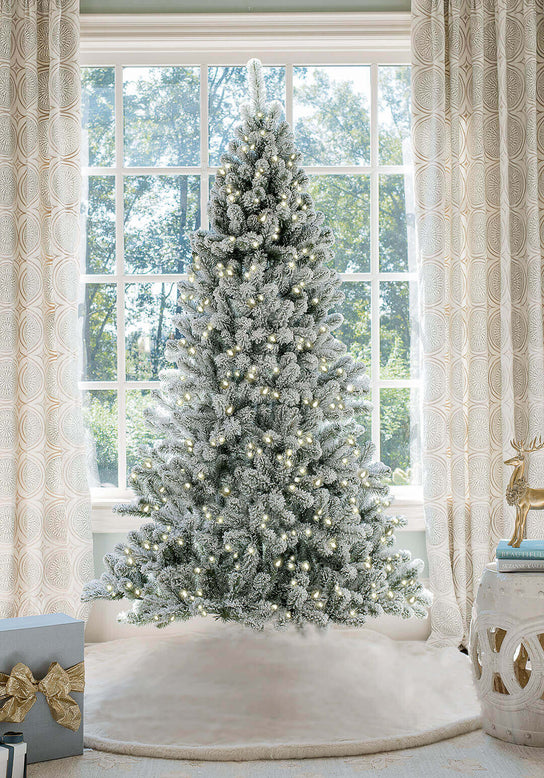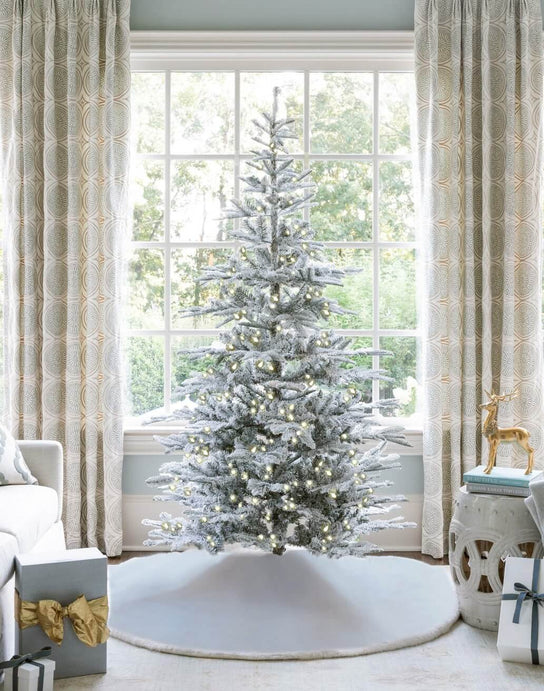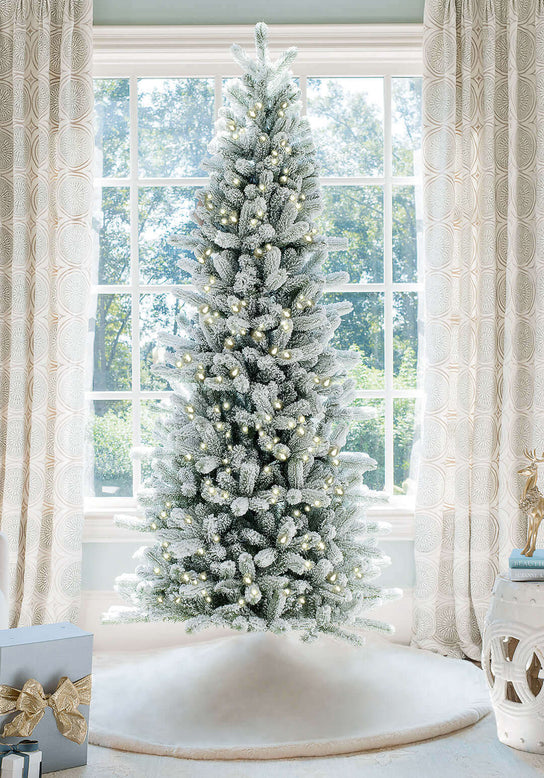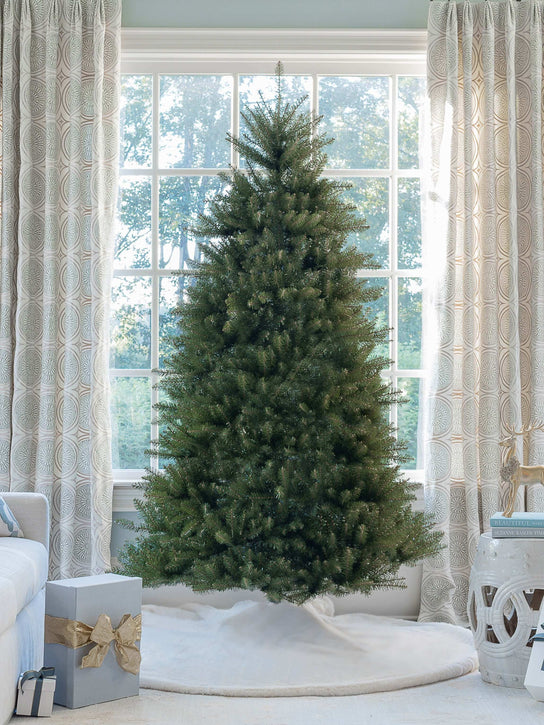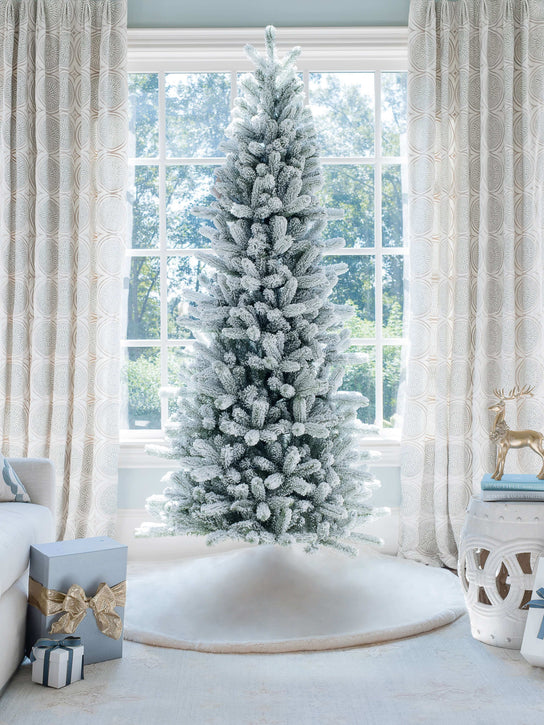
When it comes to Christmas trees, there are two main options: Classic and realistic. While both have their merits, it's essential to consider the factors that make each unique before deciding.
Classic Christmas trees are the epitome of traditional holiday décor. Their iconic shape and branches allow plenty of room for ornaments and tinsel. When selecting a Classic tree, it's essential to consider the size and shape. Trees come in various forms, ranging from tall and skinny to broad and fuller. Measure the space where you plan to place the tree and determine the appropriate size and shape.
Another consideration is whether to choose a pre-lit or unlit tree. Pre-lit trees come with attached lights, while unlit trees allow you to customize the lighting. Pre-lit trees are convenient, but unlit trees give you more control over the type and placement of lights.
On the other hand, realistic Christmas trees are perfect for those who want the look of a fresh-cut tree without maintenance. Modern technology has allowed realistic trees to mimic the look and texture of real evergreens. When selecting a realistic tree, it's essential to consider the type of material used. PVC and PE are the most common materials used in realistic trees. PVC is more affordable and provides a classic look but lacks the texture of real evergreens. PE, on the other hand, is more expensive but provides a more realistic look and feel.
Another consideration when selecting a realistic tree is the number of tips. The more tips a tree has, the fuller it will appear. However, more tips also mean a higher price tag. Therefore, it's essential to balance the budget and desired fullness.

When choosing a Christmas tree, there are many factors to consider. One of the most critical decisions is choosing a Classic or realistic tree. While Classic trees have a classic charm, more and more people are opting for realistic artificial trees due to their many advantages.
The most apparent advantage of a realistic tree is that it doesn't shed needles. Unfortunately, real trees can be messy and require constant cleanup, leaving behind a trail of arrows that can be difficult to contain. On the other hand, a real tree will remain pristine throughout the holiday season and can be easily packed away for use next year.
But a real tree is more than just practical and can be stunningly beautiful. Today's artificial trees are created with unparalleled attention to detail and are often indistinguishable from the real. You can find trees that mimic popular varieties such as Fraser Fir, Balsam Fir, and Noble Fir. With realistic needles, boughs, and even pinecones, you'll enjoy all the beauty of a real tree without any drawbacks.
When choosing a realistic tree, there are a few key features to look for. First and foremost, make sure the tree is made from high-quality materials, as this will ensure its durability and longevity. Look for trees made with PVC needles and wire branch construction; these materials are realistic and sturdy.
Another consideration is the number of branch tips the tree has. More tips generally mean a fuller and more lush appearance, so aim for at least 1,000 tips for a 7-foot tree. And remember to consider the height and width of the tree - you want to make sure it fits comfortably in your space and doesn't overwhelm your room.
At King of Christmas, we offer a wide selection of realistic trees to suit your every need. From the classic King Fraser Fir to the stunning King Noble Fir, we have a tree to fit every home and budget. With our expert guidance and advice, you can choose the perfect tree for a beautiful and stress-free holiday season.

The holiday season is fast approaching, and for many, that means searching for the perfect Christmas tree to bring home for the festivities. With so many options available, choosing between a Classic and a realistic Christmas tree can be daunting. However, you can confidently decide on your home with some guidance and expert advice.
When choosing between a Classic and a realistic tree, the essential factors are durability and lifespan. After all, you want your Christmas tree to last for years, not just for one holiday season.
There are a few things to keep in mind when it comes to Classic Christmas trees. First and foremost, you want to purchase a fresh tree. The fresher the tree, the longer it will last. Look for trees with green needles that don't fall off easily when touched. Additionally, be sure to keep your tree well-watered. A dry tree is not only a fire hazard but will also dry out quickly, causing needles to fall off and branches to wither.
For those considering a realistic Christmas tree, durability and maintenance are also vital factors. Quality is essential here. Look for trees with sturdy bases and branches holding ornaments without drooping. A tree with quality materials will last longer and require less maintenance. Additionally, remember that these trees can be easily packed away, making them convenient for those with limited storage space.
While Classic and realistic trees have advantages, it ultimately comes down to personal preference. Some may prefer the nostalgic feeling of a Classic tree, while others may appreciate the convenience and durability of a real tree.

Choosing the perfect Christmas tree is one of the most important decisions this holiday season. However, with so many options available, from Classic to realistic tree tips, it can take time to determine which will work best in your home. But don't worry; we've got you covered. In this article, we'll reveal what to look for when deciding between Classic and realistic tree tips and how to decorate them for a beautiful holiday centerpiece.
First, let's define what "Classic" and "realistic" Christmas trees are. A Classic tree usually refers to a live Christmas tree, while a realistic tree is often an artificial one that mimics the look and feel of a real tree. When deciding between the two, weighing the pros and cons of each is essential.
If you're looking for the convenience of a tree that can be set up and taken down quickly, then a realistic tree may be your best option. However, if you prefer the look and smell of a real tree, then a Classic tree may be a better choice. Remember that live trees require more maintenance and can be more expensive than artificial ones.
When it comes to tree tips, there are several things to consider. For Classic trees, you'll want to look for a tree with dense, full branches that can support a lot of ornaments. Additionally, consider the species of tree you're purchasing, as each type has unique features and benefits.
For realistic trees, choose one with a higher "tip count," which means more branches per section. This will give the tree a fuller and more natural appearance. Also, consider the material of the needles, as higher-quality trees will have hands that feel more authentic and lifelike.
Once you've chosen the perfect tree, it's time to decorate it to match your style. Whether you prefer a classic, elegant look or a whimsical, fun vibe, there are countless ways to create a beautiful holiday centerpiece. Use strings of lights, ornaments in various shapes and sizes, garlands, and even ribbons to create a unique and festive display. Feel free to mix and match colors and textures for a one-of-a-kind look.
In conclusion, whether you choose a Classic or realistic tree, remember that it's all about finding the perfect fit for you and your family. Look for high-quality tree tips that suit your decor style, and remember to have fun with the decorating process. With a little effort and a lot of love, your Christmas tree will be the highlight of your holiday season. Happy decorating!






